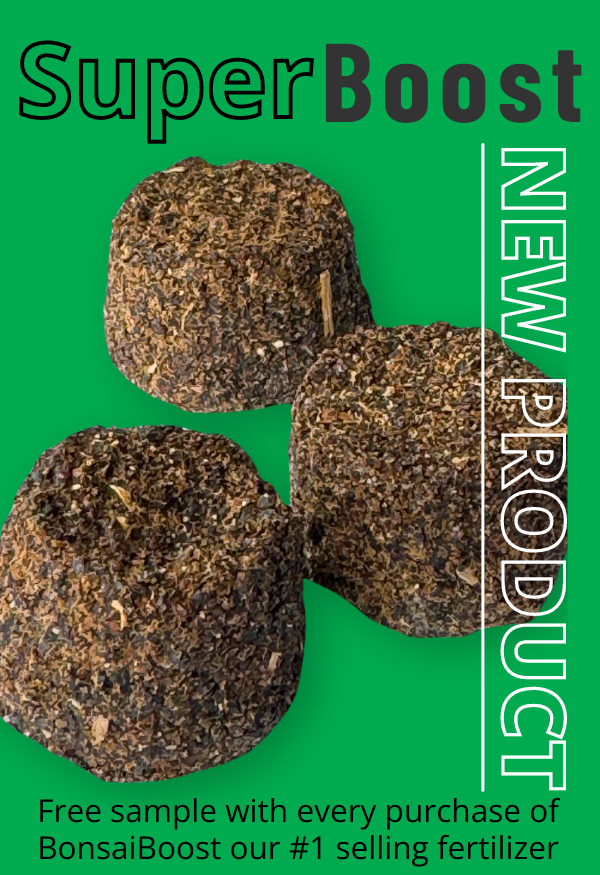Your Cart is Empty
spend R1000. 2kg or less. free shipping.
Menu

spend R1000. 2kg or less. free shipping.
bonsai
gardening
Orchids

Approach grafting revisited
3 min read
Earlier this season I did quite a number of approach grafts on trident maples and hackberries I have in development. Unlike thread grafts, approach grafts can pretty much be done throughout the growing season which suits me fine as early spring, when thread grafts must be done is way too busy generally.
I like making multiple use of the material I use for grafting with, as the image below illustrates. I will often use the same rooted cutting or seedling to improve the nebari and to place a branch where there was none before. It's quite a successful and time saving technique.

Image caption. The tree featured in this blog with several grafts.
There are two grafts which are the subject of this post though. The one was for what may well become the main branch in the future. Below is a photo of the graft I refer to.

Image caption. Approach graft for a future branch
The other is the graft I am using to create a new trunk line with. I felt there was not sufficient taper or movement in this part of the tree. So I cut it off and grafted a seedling onto the trunk at the angle I would like the trunk to take. As the tree was very healthy it took. Notice the large difference in girth of the seedling before and after the graft area. A sure sign that it has fused and can now be separated.
I use tacks which are found in some hardware stores in Japan. What makes them so handy is that they have rubber-like stoppers which prevent you from harming the surrounding plant tissue when you nail the graft in place. I have now made these available for purchase here.

Image caption. Another approach graft, this time with the purpose of creating a new apex.
The grafting of a possible future main branch also took very well indeed. It is clear that sealing the graft very well is key to success. I can strongly suggest the Japanese made Kiyonal tree sealer, as this makes an airtight seal around the graft, which will help ensure success.
I will also mention that from what I have seen, scoring the bark especially on thin branches or seedlings, leads to that graft failing. Hence I tend not to score the bark and simply attempt to get the graft to fit as snugly as possible. This is achieved through a combination of tools; first I use a very fine toothed saw (You can choose from one of these) to make two parallel grooves, then I will use a grafting knife to recut the edges of the cuts made by the saw and test fit the scion. If necessary I will enlarge the cut with the grafting knife until when you test fit the scion it stays in position without being held. After that it is nailed into place with the approach grafting tacks.

Image caption. The successful graft has been shortened, close to a dormant bud which was purposefully positioned here when the graft was done.
Its always a very good idea to position a dormant bud close to the graft. This will help make it possible to adjust the angle of the grafted branch later on, to create a more interesting angle where it emerges from the graft or simply to prevent too long an internode.
4 Responses
Mark Polson
July 30, 2015
Hi Terry
I have numerous Juniper cuttings that I have developed over the years by coiling wire around trunks, redirecting sap flow (live veins) which I have then carved out either side of the wire bite. These live veins have now thickened nicely creating very interesting trunks. The foliage, as you will know, is nowhere nearly as compact and desirable as Itoigawa foliage though. I would like to graft Sargeant Juniper scions to improve this. what is the best technique and what time of the year is best? Can this also be done with older, much larger bonsai? Do I graft on to trunk or only branches? Must the scions be the same diameter as the branch? How does this work if grafting on to the trunk?
Regards, Mark
Bill
July 16, 2015
What putty or paste has been used over the graft. Is there a reason why you did jot use grafting tape ?
Graham
July 13, 2015
Terry, how successful are ground layers on tridents to develop a new root base?
Leave a comment
Comments will be approved before showing up.
Recent Articles
- Enthusiasts Top Wiring Tips July 17, 2023
- Top fertilizing tips March 28, 2023
- Top watering tips February 13, 2023
- Creating Japanese Maple forests October 24, 2022
- How to dig bonsai material August 15, 2022
- How I style bonsai and you can too April 30, 2022
- Swamp Cypress Bonsai Styling July 03, 2021
- How to hide large scars quickly June 14, 2021
- 14 Tips for Field Growing Bonsai May 31, 2021
- Aquaria: An Introduction January 06, 2021

FREE SAMPLE GIVEAWAY!
We are giving away samples of our new product, SuperBoost fertilizer pellets.
A unique organic blend of Blood meal, Bone meal, Canola meal, Fish meal, Fish hydrolysate. Macro, micro and trace minerals. Plant natural stimulating hormones, enzymes and amino acids.





Terry
August 08, 2015
Mark those are some difficult questions to answer in this commenting system. There are some very good articles on the web which deal with this topic and I would suggest that you check out Peter Tea’s blog as you will find it very informative. In a nutshell there are going to be several basic techniques for the grafts with probably many variations. However without pictures to illustrate it’s going to be difficult for me to convey them. Sorry. The best time would be when sap is flowing strongest and to use the appropriate scion material. It’s very often done on very old material, so yes absolutely. In Japanese there is a term for this which roughly translated means something like changing the trees clothes. You can graft both onto the trunk and branches. The grafting technique you apply though may depend however on where you are grafting. For instance you may decide to use a Shimpaku whip to approach graft onto the trunk, but a wedge type graft on branches. No the diameter has little to do with it, in fact the professionals work with material of only matchstick thickness. Hope this helps a little but I suggest you do further reading although there is no substitute for practice when it comes to grafting.
Bill, you can use either liquid paste or grafting tape. I do both and both work. I just prefer to use paste as it works much easier. The paste I use is joint caulk, used for wooden flooring and such. It’s acrylic and cuts heal phenomenally well, too well in fact with maples as the callousing is so rapid it forms lumps. However these can be further worked on or they will disappear in time.
Graham, ground layering works very well with this species. What I suggest is to perform the layering after the spring leaves have fully emerged and are starting to harden off. Remove the bark and cambium fully! No sign of green should be seen or it will heal and not issue roots. For the top cut make it jagged, like the teeth of a saw. Use a very sharp blade for all this work. Use rooting hormone powder and apply to all edges. Create a drainage mesh wall around the layer and fill with LECA and a little peat. Place moss or some moisture retaining medium on top to avoid drying out too quickly. The idea is to have a medium in which to root which is very fast draining. You will have tons of roots within a couple month if you do it the way I describe above (although I’m sure you will meet with success using variations of the same). I would then wait till following repotting time to separate the layer.